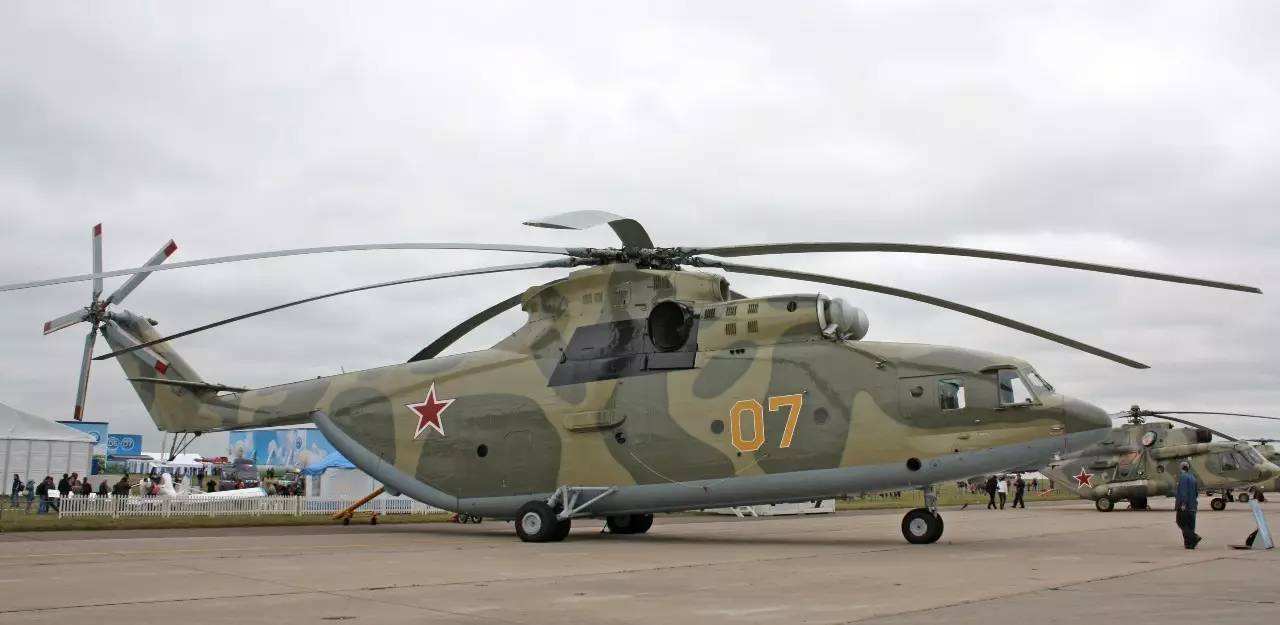
Mi-26 heavy lift helicopter
According to media reports of China and Russia, the two countries will soon sign a contract to jointly develop the Advanced Heavy Lift (AHL) helicopters. They plan to manufacture a total of 200 AHL helicopters, with a total value of US$20 billion.
This cooperation plan is expected to fill in China’s blank in the development of heavy lift helicopters. Recently, the reporter interviewed Wang Xiaowei, an expert on Russian studies and research fellow at European Studies Center, China University of Political Science and Law.
Reporter: Why did China choose Russia as its partner in the development of heavy lift helicopters? What position does China occupy in this field?
Wang: Currently, the US and Russia dominate the heavy lift helicopter field globally. Russia’s Mi-26 heavy lift helicopter was proved to be very useful in disaster relief during the 2008 Wenchuan Earthquake. However, the heavy lift helicopter has long been a disadvantage in China’s aircraft industry. At present, the takeoff weight of China’s domestically developed helicopters are usually below 10 tons, and homemade heavy lift helicopters with above 20 tons’ takeoff weight are still in blank.
Russia is a global leader in the development of heavy lift helicopters. Its Mi-26 ranks top one in the world in terms of takeoff weight and payload, with transporting capacity even equal to the US C-130 transport aircraft. However, Russia suffers a shortage of fund. It hopes to further refine the Mi-26, especially the engine. In this context, China and Russia reached a consensus on joint development of heavy lift helicopters.
Reporter: What significant value does the heavy lift helicopter have? Why is it important for China?
Wang: The heavy lift helicopter can enhance transport capacity in the frontline. Such a helicopter is capable of transporting soldiers of a whole company in assault warfare. It can play a crucial role in transoceanic operations. Heavy lift helicopters can also play an important role in civil use. For instance, after the outbreak of the 2008 Wenchuan Earthquake, many roads in the affected areas were blocked, and rescuing vehicles couldn’t reach the Tangjiashan landslide-dammed lake. In this case, a Mi-26 helicopter rented by China from Russia played a very significant role in disaster relief. It carried out dozens of flight missions, transporting more than 80 heavy engineering vehicles to the location.
China is a country with complicated topography and frequent occurrences of natural disasters, especially in its Xinjiang, Tibet, and some central mountainous regions. If China overcomes its weakness in this regard, homemade heavy lift helicopters will play a great role in natural disaster relief or special military operations. Moreover, if heavy lift helicopters are commissioned to the Chinese People’s Liberation Army (PLA), its cross-sea combat capability will significantly deter Taiwan separatists.
Reporter: Given their superior performance, heavy lift helicopters must be costly.
Wang: Yes, heavy lift helicopters are pricy. For example, the US Sikorsky CH-53E Super Stallion, with a takeoff weight of nearly 40 tons, costs US$150-200 million each. The AHL helicopter that China and Russia are going to develop has a smaller takeoff weight than that of the Mi-26, which is thus at a lower price. Its cost is estimated at about US$100 million. The two countries will sign a contract to build about 200 such helicopters, with a total value of around US$20 billion.
Reporter: What is the significance of this cooperation for both China and Russia?
Wang: The cooperative development project, on the one hand, can solve Russia’s fund shortage, and on the other hand, will fill in China’s technological blank in heavy lift helicopter development and help the country learn and grasp advanced technologies concerning heavy lift helicopters as soon as possible. This is a significant win-win deal.
Reporter: With the increasingly deepened military technological cooperation between China and Russia, will there be a “ceiling” for their cooperation?
Wang: China-Russia relations have never been better than now. Both facing pressure from the US, the two countries have significantly enhanced their military technological cooperation in recent years. Russia boasts a robust military industry featuring technological profoundness and a complete system. After the collapse of the Soviet Union, although Russia’s military industry faces problems such as talent drainage and fund shortage, its key national projects such as those concerning the development of strategic weapons have barely been affected. Particularly, remarkable progress has been made in the development of some cutting-edge weapons and military equipment.
China’s military industry has developed rapidly in the past few years, and there is a huge space for military trade between China and Russia. At present, Russia still has a robust military industrial base, and hasn’t unveiled many of its advanced weapons, such as laser, robotic, smart and hypersonic weapons. China may communicate with Russia in these fields. So, it’s really too early to predict that China-Russia military cooperation will reach the “ceiling”.









